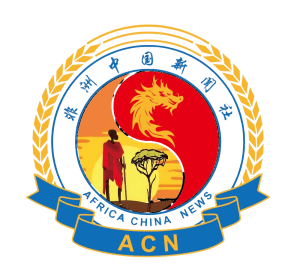When talking about Africa-China relations today, it’s easy to think of gleaming highways, sprawling industrial parks, and large-scale infrastructure projects. But the seeds of this dynamic partnership were sown decades ago, during a fascinating period spanning the 1970s to the 1990s. These were the years when the foundations of one of the 21st century’s most defining geopolitical relationships were carefully laid.
The 1970s: Laying the Foundation Through Solidarity
The 1970s were a politically charged era globally, and for Africa, it was a time of newly won independence, bold aspirations, and a search for partners who truly respected their sovereignty. Enter China—a nation that, under Mao Zedong, positioned itself as a champion of developing nations. The driving force was ideological solidarity, where Beijing portrayed itself as a fellow struggler against Western colonialism and imperialism.
One of the most significant developments of this period was the construction of the Tanzania-Zambia Railway (TAZARA), often referred to as the “Uhuru Railway.” Completed in 1975, this 1,860-kilometer railway was a monumental project, connecting Zambia’s copper belt to the Tanzanian port of Dar es Salaam. What made TAZARA extraordinary wasn’t just its scale—it was also a gesture of political goodwill. China financed and constructed the railway, deploying thousands of Chinese engineers and workers, in what remains one of the largest infrastructure projects on the African continent to date.
The railway wasn’t just about moving goods; it was a symbol of resistance against apartheid and colonialism. Both Tanzania and Zambia needed an alternative trade route that didn’t rely on apartheid-controlled South Africa or Rhodesia. For China, TAZARA was a statement of solidarity, demonstrating its willingness to support African nations on their own terms.
The 1980s: A Decade of Quiet Consolidation
The 1980s were less dramatic but no less significant. With economic reforms taking hold under Deng Xiaoping, China’s focus shifted inward as it began modernizing its economy. However, its commitment to Africa didn’t waver. Trade and cultural exchanges grew steadily, and China quietly built goodwill by sending medical teams, offering scholarships, and expanding agricultural assistance across the continent.
During this time, Beijing also began to fine-tune its approach. The ideological rhetoric of the Mao era gave way to pragmatism. Chinese leaders recognized that sustainable partnerships required mutual economic benefits. This shift in philosophy would lay the groundwork for the more robust and transactional relationships that would emerge in the 1990s.
The 1990s: Economic Cooperation Takes Center Stage
By the 1990s, Africa-China relations had entered a new phase. China was emerging as an economic powerhouse, and Africa, while still grappling with economic challenges, was a continent brimming with untapped potential. This decade marked a turning point as the partnership shifted from political solidarity to economic collaboration.
In 1996, then-Chinese President Jiang Zemin made a landmark tour of six African nations. During his visit, he outlined China’s Five Principles for African Cooperation, which emphasized mutual respect, non-interference, and win-win economic development. This was no empty rhetoric; it was backed by action. Trade volumes between Africa and China began to soar, with Chinese companies increasingly investing in African infrastructure, mining, and manufacturing.
The culmination of this new direction came in 2000 with the establishment of the Forum on China-Africa Cooperation (FOCAC). Though technically outside the timeframe of the 1990s, the groundwork for FOCAC was laid during this decade. FOCAC institutionalized the relationship, creating a structured platform for dialogue, trade agreements, and development initiatives that continue to shape Africa-China ties today.
A Legacy of Transformation
The transformation of Africa-China relations between the 1970s and the 1990s was nothing short of remarkable. What began as ideological solidarity evolved into a multi-faceted partnership built on trade, infrastructure, and mutual development.
Today, the TAZARA railway stands as a reminder of what this relationship can achieve when driven by shared goals. Similarly, the pragmatism of the 1990s set the stage for the economic boom that has defined Africa-China relations in the 21st century.
Critics often question the balance of power in this partnership, but its history is a testament to the agency and vision of both sides. As Africa and China continue to navigate their shared future, the lessons of these pivotal decades remain more relevant than ever.




